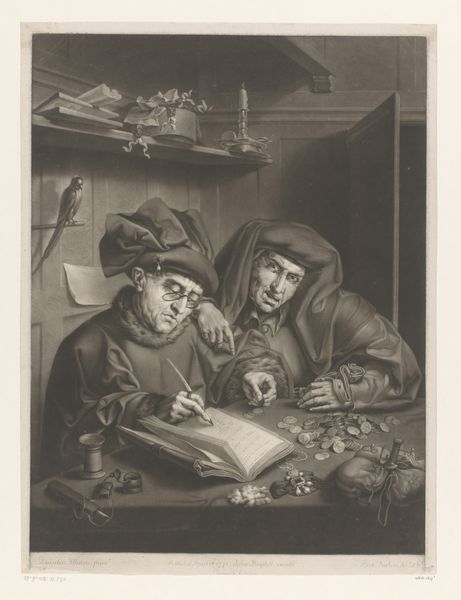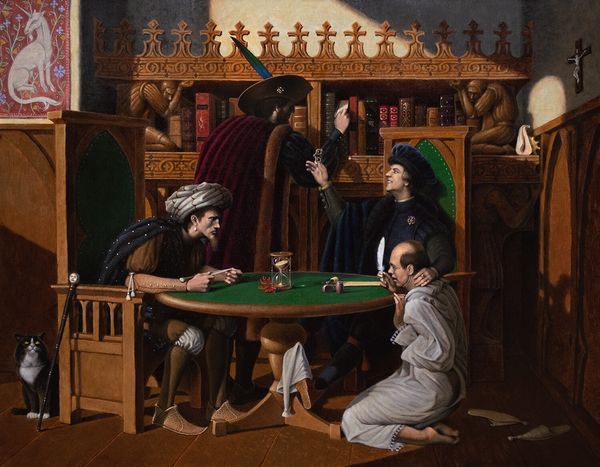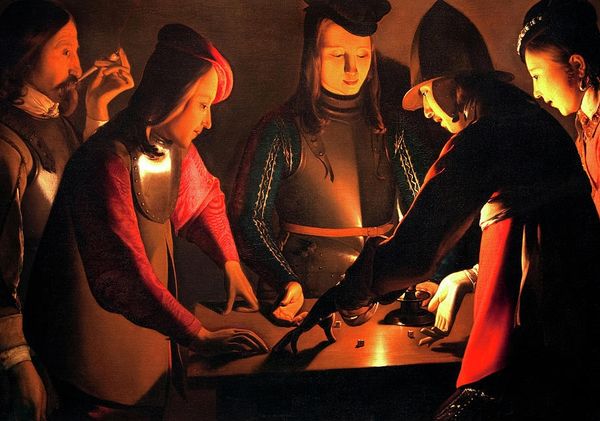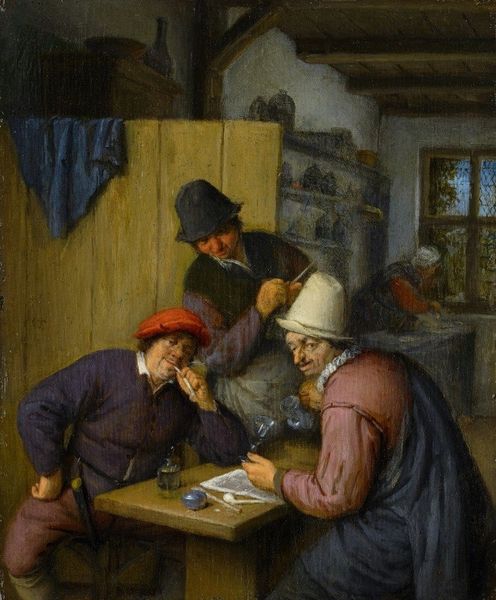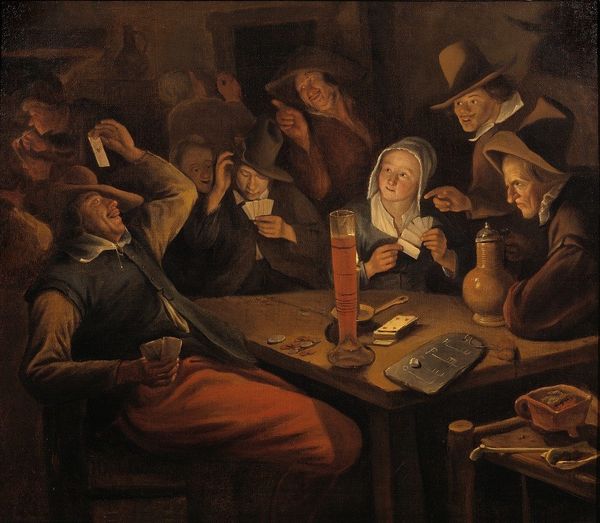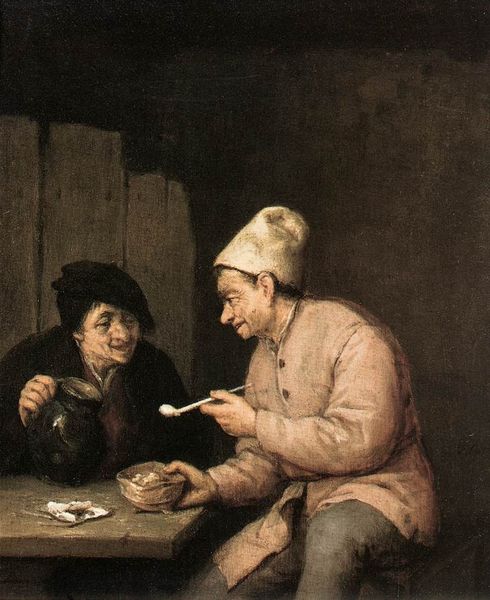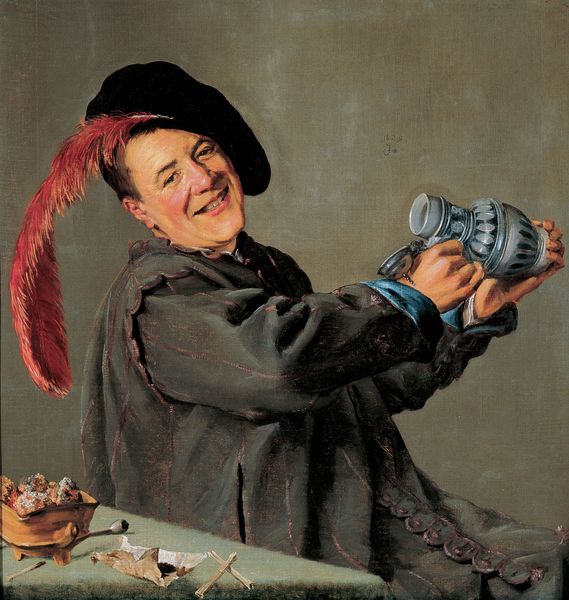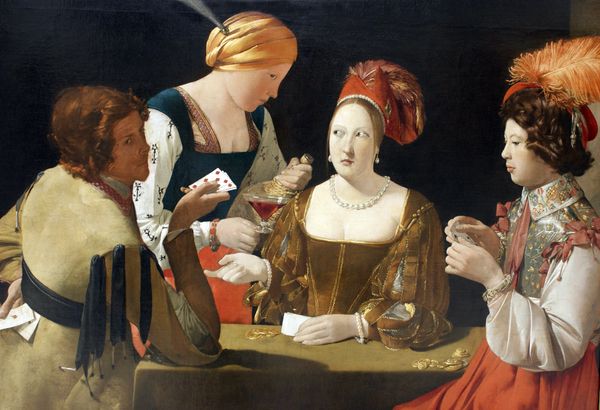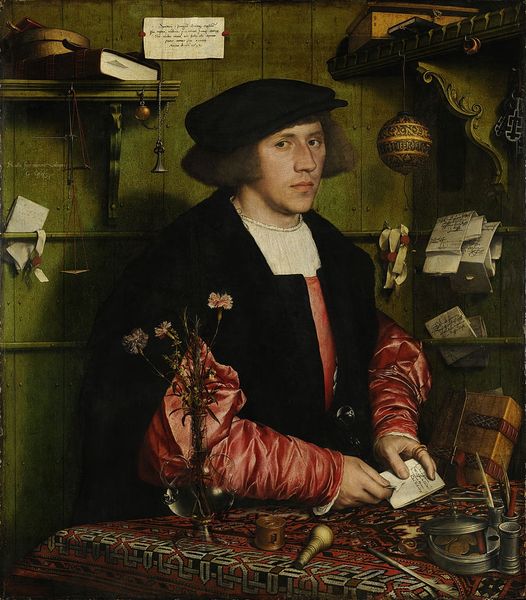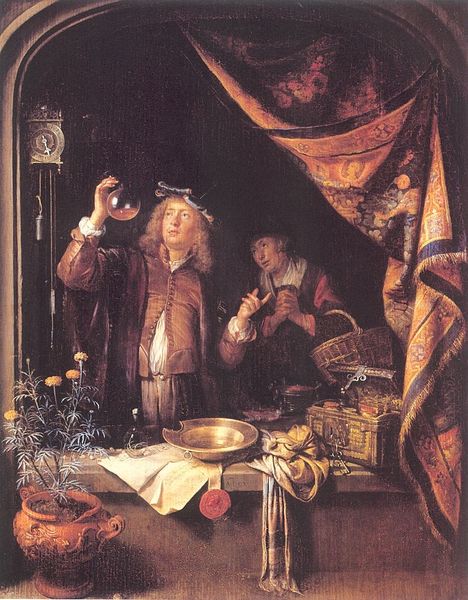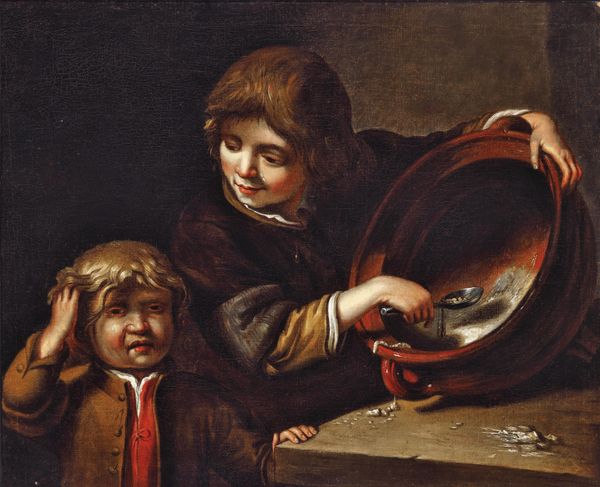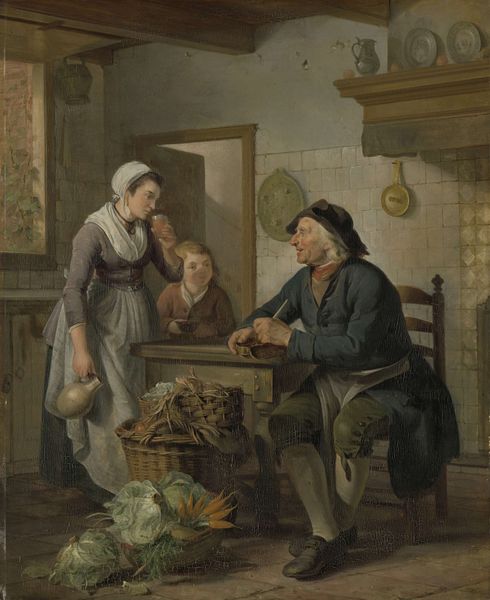
painting, oil-paint
#
portrait
#
portrait
#
painting
#
oil-paint
#
genre-painting
#
northern-renaissance
Dimensions: 67 x 70.5 cm
Copyright: Public domain
Curator: Quentin Matsys's "The Moneylender and His Wife," painted in 1514, invites us into the world of early 16th-century Antwerp. You can find this oil-on-panel work at the Louvre today. Editor: Immediately, I’m struck by the density of objects and detail; the weight of commerce literally bearing down on these figures. The somber colors give a feeling of grounded, material reality. Curator: The meticulous depiction certainly creates a rich atmosphere, but consider also the symbolic dimension. The scales, the coins – these aren't merely objects; they signify a careful weighing of earthly versus spiritual matters. The wife's book and averted gaze, compared to the husband’s concentrated counting, underscore this tension. Editor: I see your point, but I can’t ignore the tangible evidence of Matsys's craft. Look at the surface of the coins, you can almost feel the cold metal; each texture achieved through layers of oil paint. And notice how the arrangement is such to guide our eyes, leading us through the stages of wealth and labor to production and sale. This speaks to a rising merchant class asserting itself, the importance of their transactions being visualized through painting. Curator: A powerful perspective. Consider the mirror placed there: do we simply see a reflection or is it a reference to a more profound truth about self-awareness and judgment? The symbols create multiple interpretive pathways for this narrative to emerge through form. Editor: It's hard not to think about the social context when looking at those objects, the physical evidence of the couple’s livelihoods. There’s so much information encoded within those material possessions. Curator: It's a work that bridges the material and the symbolic so profoundly, revealing so much about the psychological space it inhabited in 16th-century Antwerp. Editor: Indeed, getting to discuss Matsys's process, subject, and setting helped me better appreciate just how multi-faceted it really is!
Comments
No comments
Be the first to comment and join the conversation on the ultimate creative platform.

